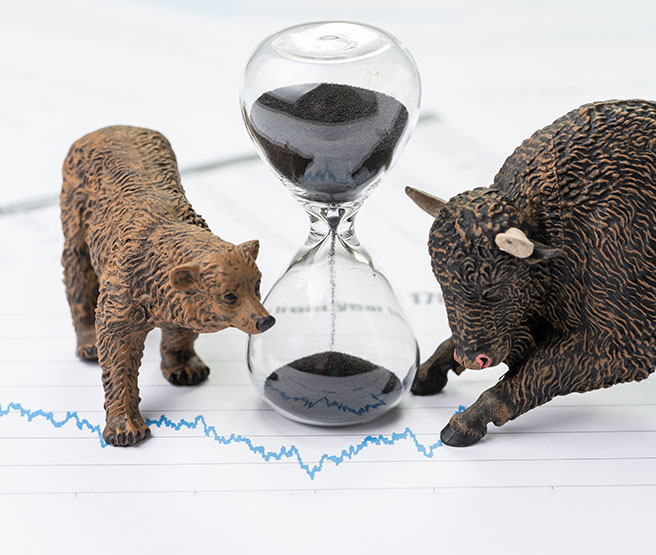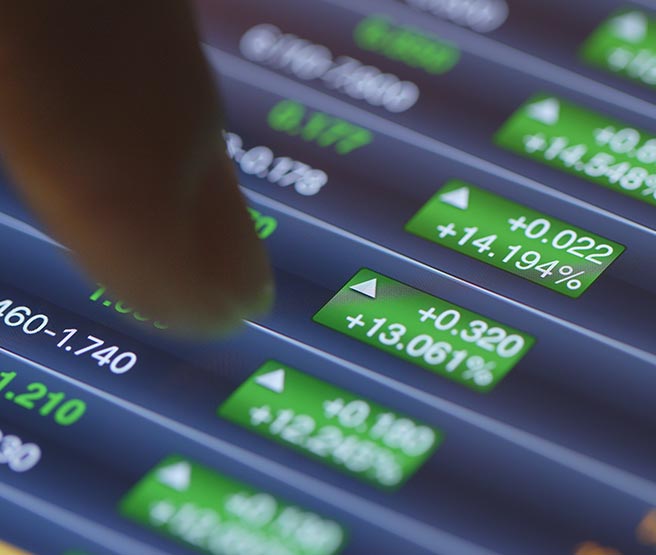
Risk
- In general terms, risk refers to the amount of change (both up and down) in an investment’s value over time.
- There are several types of risk associated with the individual TSP funds – credit risk, currency risk, inflation risk, market risk, and prepayment risk.
- In a behavioral context, risk appetite refers to the amount of risk that one is willing to take in pursuit of reward.
- Investors with a high risk appetite focus on the potential for significant gains and are willing to accept a higher possibility or severity of loss. Conversely, investors with a low risk appetite are risk-averse and focus on stability and preservation of capital.
Show More
- In a behavioral context, risk capacity refers to one’s ability to take risk; how much risk a person can actually bear; the ability to absorb losses without having one’s financial goals jeopardized.
- Beyond risk appetite and risk capacity are known and unknown risks – both affect behavior dramatically.
- Known risk, or “normal risk,” is risk we can comprehend easily and quantify using historical data from observations of financial markets (e.g., market volatility, inflation).
- Unknown risk, or “abnormal risk,” occurs once every 10 or 20 years and falls outside expectations.
- You cannot eliminate risk, but the proper mix (a diversified portfolio) of investments and periodic rebalancing can help strike the right balance between risk and return.
Volatility
- Volatility is a measure of the frequency and severity of price movement in a given market.
- While price swings are a common phenomenon in most asset classes, they are the most famous in the stock market. One reason why stocks are such a volatile asset class is that there are countless factors that can affect a company’s future profits, and many potential interpretations of those factors by millions of investors around the world.
- In the short-term, volatility is driven by changes in demand, which is largely driven by changes in earnings expectations. Those expectations can be influenced by new economic data, earnings reports, interest rate changes, political changes, and new innovations.
Show More

- Stock prices do not rise in a straight line. Investors are going to encounter volatility along the way. From 2008 through 2020, the S&P 500 index declined in 50 of the 156 months, approximately 32% of the time. Yet, over that same period, the index posted an average annualized total return of 9.8%.
- In 2020, there were five down months in the S&P 500 and the 12.4% decline in March 2020 was the largest monthly drop since 2008. Yet, the index posted a total return of 18.4% for the year.
- Patience may be the most important characteristic of the successful investor. Investors love the long-term return of stocks, but they hate short-term volatility. When volatility spikes, many become impatient, focusing on short-term issues and engaging in counterproductive portfolio tinkering.
- Wise investors don’t focus on short-term market movements. They understand that emotional responses to short-term market activity are likely to lead to imprudent investment decisions.

Risk vs. Volatility
- Short-term volatility in the stock market (for longer-term needs) is not risk. Risk is not saving and investing appropriately today such that you have the money you need, when you need it, in the future.
- Appreciation and acceptance of stock market volatility is the admission price for long-term wealth.
- You must be very careful not to confuse a lack of volatility for safety. While the G Fund never goes down in value, over the long-term, you risk a permanent loss in the purchasing power of your money to taxes and inflation.
- Only with investing do people become scared and run away from a good sale. While it is always a good time for a long-term investor to purchase low-cost, broadly diversified stock index funds, the absolute best time is when there are sharp declines (10%, 15%, 20% +) in the stock market.
Emotional / Behavioral Component
“A good definition of an investing genius is the man or woman who can do the average thing when all around them are going crazy.” – Morgan Housel
- Investor behavior, not investment performance, largely determines long-term results.
- Most investors are doomed to fail because in investing temperament is more important than intellect.
- Studies reveal that the average investor receives only a fraction of the stock market’s long-term return because of emotional biases that lead to poor investment decisions.
Show More

- It’s one thing to decide on your initial investment allocation, but it’s another thing to stick with it during periods when the stock market is down. It can also be tempting to try to “time” the stock market and decide when to get in and out. One of the most important parts of investing is managing your own behavior and emotions to stay disciplined through market ups and downs.
- Volatility and market sentiment are important because investors tend to react emotionally. Short-term market volatility can be trying for even the most disciplined investors.
- Investing success is not an intellectual business; it is an emotional and behavioral business.
“So much of what matters in investing over the long-term is not what you know, it’s how you behave..” – Morgan Housel
- We (human beings) are the biggest danger facing our ultimate success in reaching our financial goals. We are filled with biases and emotions, and feelings of optimism and pessimism can affect the way we make decisions.
- It is during steep stock market declines, when investor behavior is at its worst, that a well-constructed portfolio, a prudent investment strategy, discipline and a long-term focus provide the greatest value.
- Even for individuals who wish to invest on their own, it is helpful to have someone by your side who is less emotional about the way your investment portfolio behaves in the short term.

Asset Allocation
- Asset allocation refers to the percentage of your money you put into stocks, bonds, and cash (the primary asset classes). Your asset allocation will determine most of your investing risk.
- The asset allocation aims to balance risk and reward by apportioning a portfolio’s assets among different asset classes (e.g., stocks, bonds, real estate) according to an individual’s goals, risk tolerance, and investment horizon
- Asset allocation is the first thing you should consider when getting ready to purchase investments because it has the biggest effect on the way your portfolio will act.
- Wise investors take only as much stock market risk as is necessary to reach their long-term financial goals. Your portfolio allocation should be determined by your long-term financial goals, not by what’s happening in the market today or forecasts about what might happen tomorrow.
- The key is that you must stay the course through up and down markets.
Diversification
- The ending value of a continuously funded, globally diversified portfolio of index funds, over an investing lifetime, will be greater than most investors can imagine.
- Diversification in and among asset classes is the foundation of good portfolio design.
- Diversification refers to spreading money among different investments (e.g., stocks, bonds, cash) to reduce risk.
- It can be summed up as “Don’t put all your eggs in one basket.”
- Your portfolio should contain assets that are “non-correlated,” meaning they do not go up and down in lockstep with one another.
- Historically, stocks, bonds, and cash have not moved up and down at the same time. Factors that may cause one asset class to perform poorly may improve returns for another asset class.
- The goal is not to boost performance; rather, it is for downside protection – to help reduce portfolio volatility.
- While it is a key component of prudent investing, diversification means always having to say you’re sorry.


Time in the Market vs. Timing the Market
- Market timing is a hopeless task because you must be right twice. You must get out close to the top and get back in close to the bottom, and absolutely no one can do that consistently.
- Unless you have a crystal ball, you have absolutely no idea what is going to happen in/with the stock market today, tomorrow, next week, or next year. Long-term investors should not be the least bit concerned with short-term volatility in the stock market – it is completely normal. And short-term investors who have a near-term need for the money should not invest those funds in (what can be) volatile asset classes, including equities.
- Market-timing is always a bad idea, even if it occasionally works out in your favor. Actually, it’s worse when it works out in your favor because you well may confuse luck with having made a sound financial decision (i.e., skill) – and thus be more likely to engage in the same risky behavior again.
Show More
- Between 1948 and 2017, the S&P 500 composite index:
- Experienced a decline of 5% or more an average of three times per year
- Experienced a decline of 10% or more an average of once per year
- Experienced a decline of 15% or more an average of once every 3.5 years
- Experienced a decline of 20% or more an average of once every 6.3 years
- Had you been fully invested in the S&P 500 from January 1, 1995 through December 31, 2020 (i.e., missing no days), your compound annual growth rate would have been 8.4%.
- Had you missed the 5 best days, your return would have been 6.5%.
- Had you missed the 10 best days, your return would have been 5.2%.
- Had you missed the 20 best days, your return would have been 3.1%.
- Had you missed the 30 best days, your return would have been 1.3%.
- Had you missed the 40 best days, your return would have been -0.3%.
- The best and worst trading days can happen close together.
- Between 1997 and 2016, 6 of the best 10 days occurred within 2 weeks of the worst 10 days.
- From 1926 through 2020, the S&P 500 Index had a daily positive return 56% of the time. So, investors who peeked every day would have seen red numbers just about every other day. However, investors who peeked on an annual basis would have seen a positive return 75% of the time. Over 5-year rolling periods, the S&P 500 Index was positive 88% of the time, 95% of the time over 10-year rolling periods, and positive in all 20-year rolling periods. The increasing probability of achieving positive returns as the time horizon increases is the result of what is called the stock market’s long-term “upward bias.”